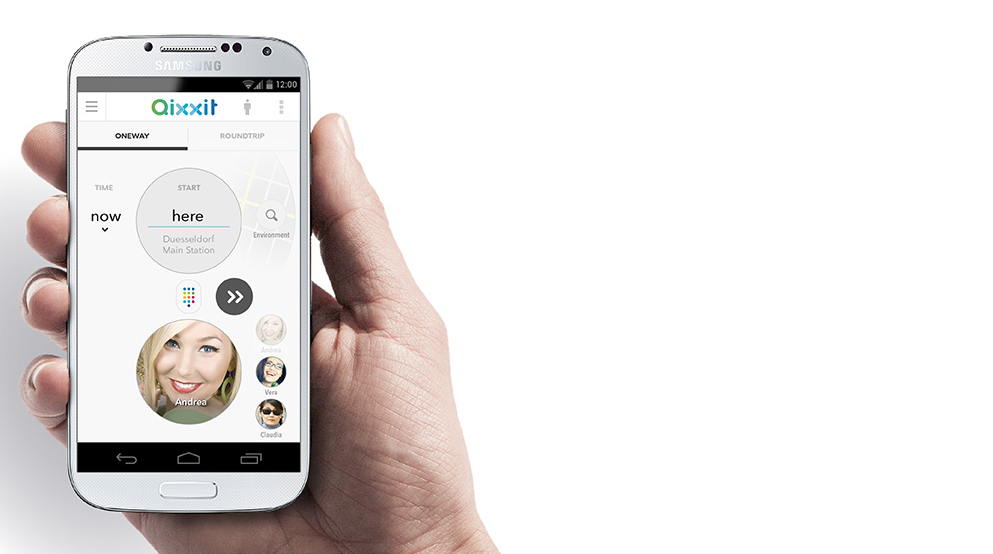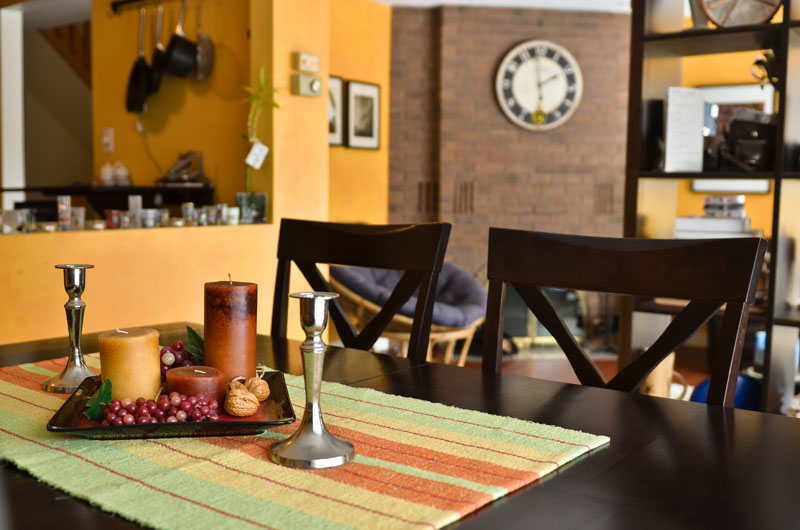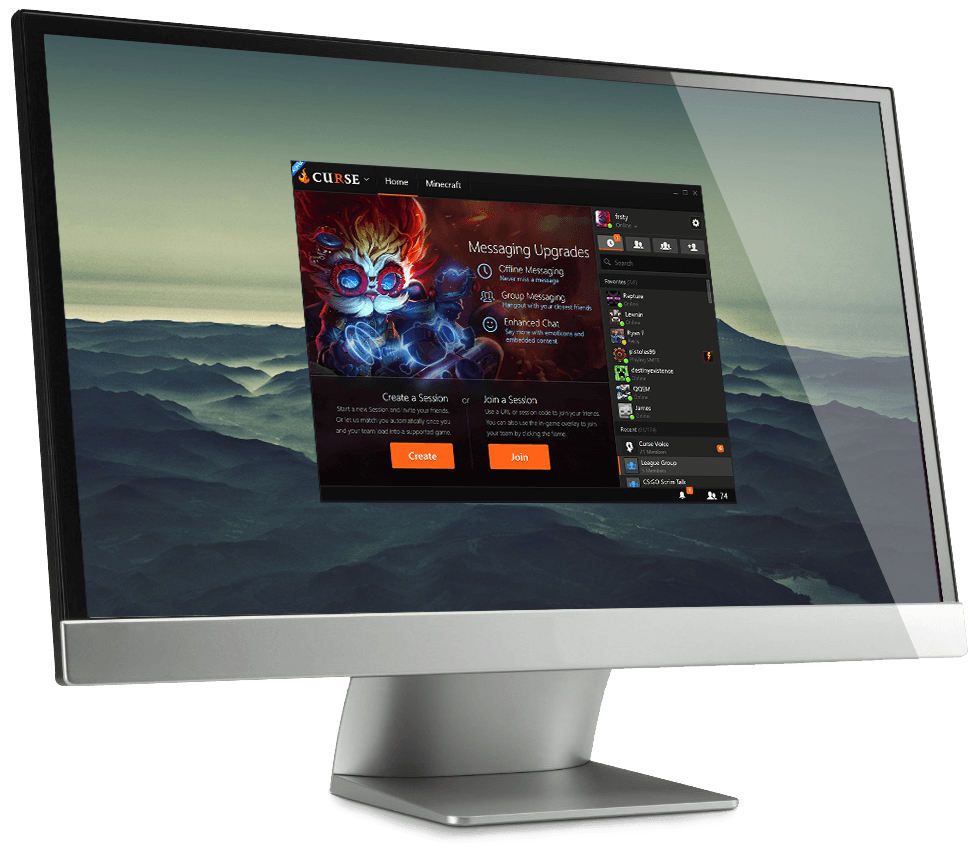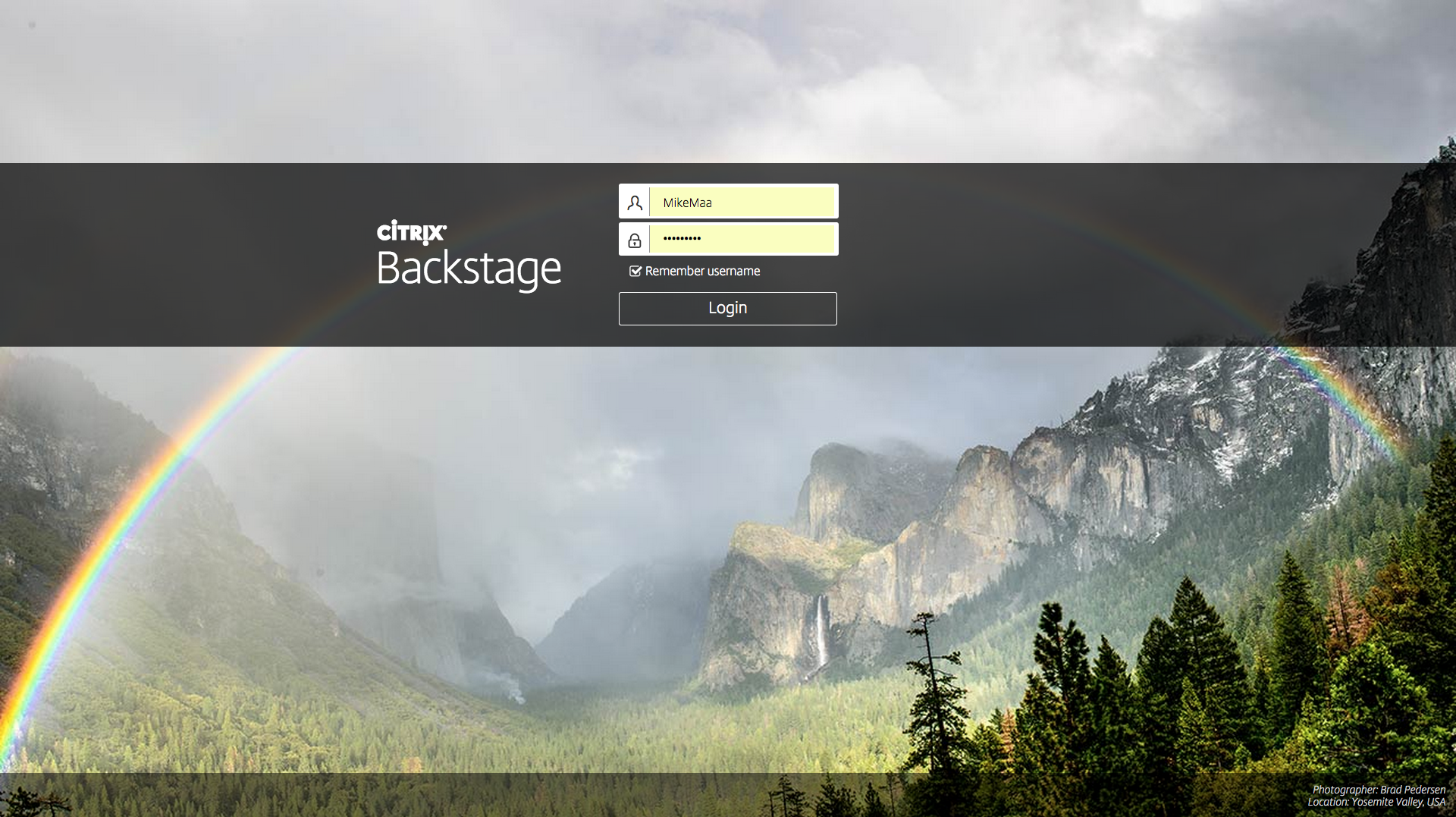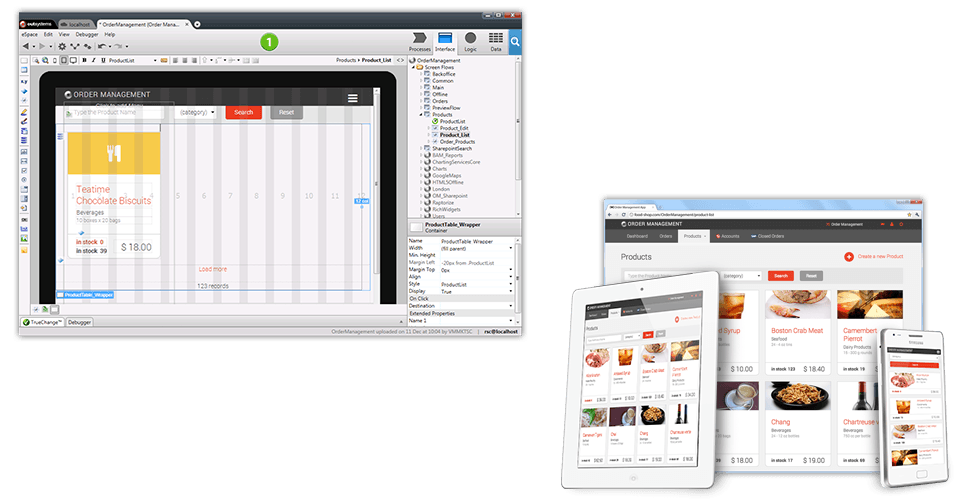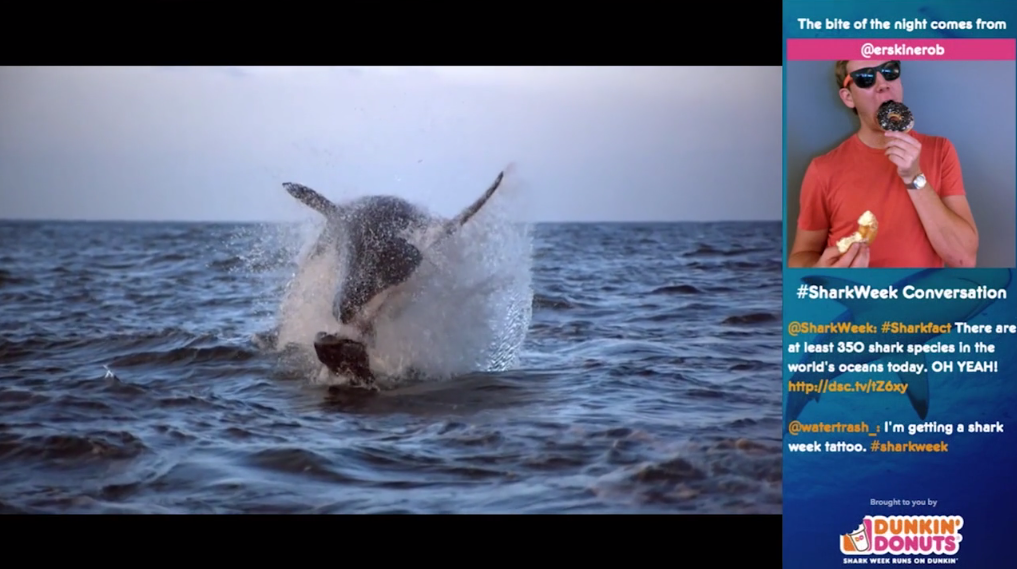Presenting winners of the 2014 Design for Experience awards. These people and organizations are doing vanguard work in the field of experience design and were selected as winners based in large part on what we can learn from their work. Watch for articles over the coming months that explore the winning entries in more detail.
Academic Program – Bentley University
As an experience designer, it’s easy to get distracted by creative aspects of your work and ignore the business needs that drive projects. Bentley University’s Human Factors in Information Design (HFID) graduate program is part of a business program, not just a UX program, which allows students to learn more than just how to create UX deliverables. Understanding the impact that UX has on business (and that business has on UX) is crucial, and can also help foster the soft skills that many pure UX programs lack. Taking this approach to UX education put Bentley University ahead of the pack.
Accessibility – Fitsme
Often, the core principles that underpin experience design can be readily applied outside the sphere of digital products and services. Fitsme is a perfect example of this. Focusing on a very real problem faced by amputees—getting dressed on their own—Fitsme creates custom clothing that’s easy for people with missing or partial limbs to put on. Magnetic clasps replace buttons for easier fastening and other modifications can be designed for each individual. For example, Alex Koslow, who was born without a right leg and wears a very heavy prosthetic, sought a pair of pants with an internal elastic panel that grabs the prosthetic below the ”knee” to help her carry the weight of her leg. Fitsme delivered.
Advanced Experience Ecosystem – Boreal Bikes Incorporated
Beacons, and sensors, and connected devices, oh my. These things are everywhere, but just because there are a lot of them doesn’t mean they’re always being used symphonically. Truth is, it’s hard to develop experiences that capitalize on all this mobility and connectivity. Boreal Bikes Inc. saw an opportunity to create a world where bicycles communicate navigational information to riders using their smrtGRiPS, which communicate using haptic vibrational patterns and distinctive ring tones. Working in concert with the cyclists’ smartphone, the technology allows them to follow directions to their destination without looking at the screens in their pockets. They also allow users to keep track of their bikes when they aren’t riding them.
Bringing Big Data to Life – Cheil Germany GmbH, Qixxit
We’re drowning in data, which is a lot like drowning in liquid gold. As you gasp for breath, you see so much potential. The alchemy of turning a sea of disparate data into a valuable product or service is something we all need to get better at, and Cheil Germany GmbH Qixxit project is a great source of inspiration. An app that evaluates all the different ways you can travel from one destination to the next—train, bus, tram, subway, city train, long-distance bus, rental car, taxi, car-sharing, bike-sharing, car, bike, footway, ferry, and plane—Qixxit culls, combs, and packages big data to help get people places quickly and efficiently.
Building Trust – Airbnb
It’s hard to think of a service that relies more heavily on building trust than Airbnb. Ridesharing with a stranger at the wheel is one thing, but strangers renting rooms to other strangers is quite another. Airbnb builds trust in a number of ways: getting users acquainted through the service before they meet in person; making reviews an integral part of user profiles; a verified-ID badge system; and their $1 Million Host Guarantee. As trailblazers in the sharing economy, Airbnb remains a smart service to study.
Championing User Interests – Veryday + Maquet Critical Care
Mechanical ventilators are a vital piece of an Intensive Care Unit, and as anyone who’s visited one knows, an ICU is a hectic, high-stakes environment. For clinicians, a truly user-friendly ventilator can be a huge boon, which is why Maquet Critical Care and design agency Veryday got in deep with this user group to develop two new ventilators, the SERVO-U and the SERVO-n. Combining physical mockups and digital prototypes for iterative user testing, Manquet and Veryday also designed with empathy for primary and secondary users (e.g., patient view, family view, distance view). Running through mock scenarios with real doctors and stand-in patients brought a shared user-centric perspective to everyone involved, resulting in a product that enhances confidence and ease of use.
Complete Customer Experience – Second Story, part of SapientNitro + Verizon Wireless
For the opening of a new store in Minneapolis’ Mall of America, Verizon Wireless and Second Story cooked up the Stop-Motion Studio, a novel little creative studio of sorts that lets customers create stop-motion videos. While they tinkered with the models on the small sets, they were also prompted to learn about phone features. Everyone surveyed said they had fun, and 95% percent of them reported learning something new, creating a very complete customer experience.
Consumer Product – Curse
In-game communication can be tricky and with some speculating that online gaming could be a $35 billion industry by 2017, there’s a market for a solution that makes it easier for gamers to stay connected while playing. Curse serves this need with free voice-over-Internet Protocol software that automatically detects users of the same game and prompts them to connect to a voice chat. A layer of security using a secure server-based architecture keeps IP addresses private, but the most important features are the ones that allow users to focus on the game at hand without having to pause to control voice settings.
Digital Media and Entertainment – BBC LIVE
The ways in which we consume media have changed so drastically in the age of mobile computing that the future of television as we came to know in the 20th Century is hard to predict. Seeing the writing on the wall, BBC launched a new LIVE digital service to coincide with their coverage of the 2014 Winter Olympics. BBC LIVE stretches over a vast online ecosystem containing BBC Sport, News, Music, and Television, encouraging audiences to interact with the events and to make it easier for them to take these special events in as a whole. The service offers enhanced companion experiences across devices, making it possible to watch multiple live video streams, zero in on key moments, and track “live text” commentary from BBC’s editorial staff and contributors.
Effective Agency Team – Slice of Lime
With more and more companies bringing UX in-house, agencies have to work extra hard not only to provide value that can’t be easily duplicated, but also to retain talented designers. While the processes that lead to a well-designed experience can be replicated, creating a culture that nourishes and inspires your team is much harder to achieve. For Slice of Lime, an experience design agency with offices in Denver and Boulder, Colo., it was important to create a culture where team members get to do exciting client work while also spending time on personal projects of interest. Recently this non-client work led to the creation of Nübi, a connected toy that helps kids learn science, technology, engineering, and math.
Effective In-House Team – Citrix
With Catherine Courage as Senior Vice President of Customer Experience, Citrix has made great strides in user-centered design. When they acquired ShareFile in 2011, an opportunity arose to nurture a small team based in Raleigh, North Carolina and Bangalore, India. All too often, when large companies acquire much smaller ones, the little guys get dissolved in one way or another. By contrast, the ShareFile team has become an integral part of Citrix’s SaaS customer experience team. Fifteen members strong and composed of interaction designers, a project manager, senior managers, a user researcher, and prototypers, the team works on five products across over 10 platforms. Their most recent redesign of the ShareFile iPhone app won the 2014Best in Biz App of the Year award.
Enterprise or Business Solution – Citrix
For a major recent redesign effort, Citrix found itself focusing on users who were very close at-hand: employees, contractors, and partners. Turning their design process inward, they set about creating an intranet that would give employees a rewarding customer experience. Using qualitative and quantitative research, detailed personas, a thorough style guide, and various prototypes, Citrix delivered a solution called Backstage that users are rallying behind.
Experience for Children – Made by Many, Hackaball
There’s no shortage of apps that educate and entertain kids by drawing them into interactions with a tablet or smartphone, but with Hackaball, Made by Many found a way to engage kids in an experience that bridges the digital and physical world. Using an iPad app, young users are able to program audio and lighting cues on a smartball. After creating a game (like the bomb technician game created by kids in a testing group, where the ball is passed carefully around the group to avoiding shaking it hard enough to prompt an explosion noise and flashing red light) kids can ditch the screen and take the ball outside to play. By introducing the basics of programming while promoting physical activity, Hackaball gives kids and parents a win-win.
Experience that Makes a Difference – Beyond + NSPCC
When the National Society for Prevention of Cruelty To Children (NSPCC) approached Beyond to partner in the creation of a new resource to educate parents and kids about popular apps and social networks, the goal was clear: keep kids safe. The road to Net Aware went from sketching, to prototyping, to refining with parent feedback that unearthed features like a color filter for apps (parents don’t always know an app’s name, but they might remember its color). The resulting site brought in 40k+ unique visitors in its first month and won acclaim from parents, who found it informative and easy to use.
Experience Design Strategy – SAP, AppHaus
Even though more organizations than ever are wise to the value of well-designed experiences, the process of creating them can still be a bit of a mystery. Getting clients involved in the process early on is usually a good start, but what about steeping them in the creative process instead of just explaining it? The SAP AppHaus in Heidelberg does just that. A work space where SAP runs design and co-creation projects with customers, AppHaus takes inspiration from the Bauhaus movement, encouraging different disciplines to work together in an inspiring environment. Housed in an old tobacco factory, AppHaus offers designers and customers a place to forge collaborative design efforts in a nurturing space.
Forward-Looking Experience – BBC LIVE
For the same reasons BBC LIVE won the Digital Media and Entertainment category, they were a perfect fit for the Forward-Looking Experience category. Reimagining the television experience is a bold move, especially for an old guard media institution. BBC’s exploration of cross-platform experiences tied to live events shows a possible future where it’s less about the device and more about the ecosystem and the immediacy of the experience.
Innovative Tool or Technique – OutSystems
OutSystems Platform powers the rapid delivery and modification of enterprise apps by leveraging responsive design, integrating existing code, and supporting rapid iterations. Available as a public cloud, private cloud, or on-premises solution, OutSystems Platform is used to produce mobile apps quickly and efficiently by over 450 enterprise organizations who describe it as a “key enabler” that’s “unlike anything that exists in the market.”
Interactive Advertising or Marketing – Hill Holliday, Shark Week + Dunkin’ Donuts
As one judge joked: “Shark Week and Dunkin Donuts should be graded on a curve, as they’re easier to engage with than most.” Thankfully, this is an interactive experience that doesn’t rest on the laurels of its dual-chamber awesomeness factor. Using Xbox One as a launch point, users were able to join an interactive Shark Week experience that included live social content, interactive trivia, bonus shark content, and, of course, donuts. The purveyors of circular deliciousness released a special donut iced to look like a life preserver and encouraged viewers to “Take a Bite, Take a Pic,” and become a part of the festivities on social media. The campaign brought a sizeable return and created an audience that engaged with both products.
Mobile Solution or Application – Telstra + Imagination
How about an app that lets you explore a fireworks display in 360 degrees from the vantage point of the fiery explosions? The Telstra app does just that, using footage captured by a drone in the midst of the Sydney New Year’s Eve celebration. The app also let revelers stream live footage from the four-hour celebration and allowed users to set up 50 free midnight texts so they could preload their messages and not miss out on the birth of the new year by messing with their phones. Nearly 167,000 of these were sent and there were over 60,000 downloads of the app without any media spending. Perhaps the most novel aspect is that it was unabashedly a single-event app (though you can still download it and experience the fireworks all over again).
Public Sector Experience – Case Commons
The first user-centered, SaaS application developed specifically for child welfare workers, Case Commons Inc. went deep with folks working in child welfare to deliver a product, Casebook, that would help them manage their day-to-day work with families and capture important information about the kids in their care. With support from the Annie E. Casey Foundation (AECF)—the largest philanthropy dedicated to improving quality of life for disadvantaged children and their families in America—Case Commons was able to achieve a paradigm shift in the way government technology is created, using agile methodologies, user-centered design and other practices more typically associated with innovation in the private sector.


